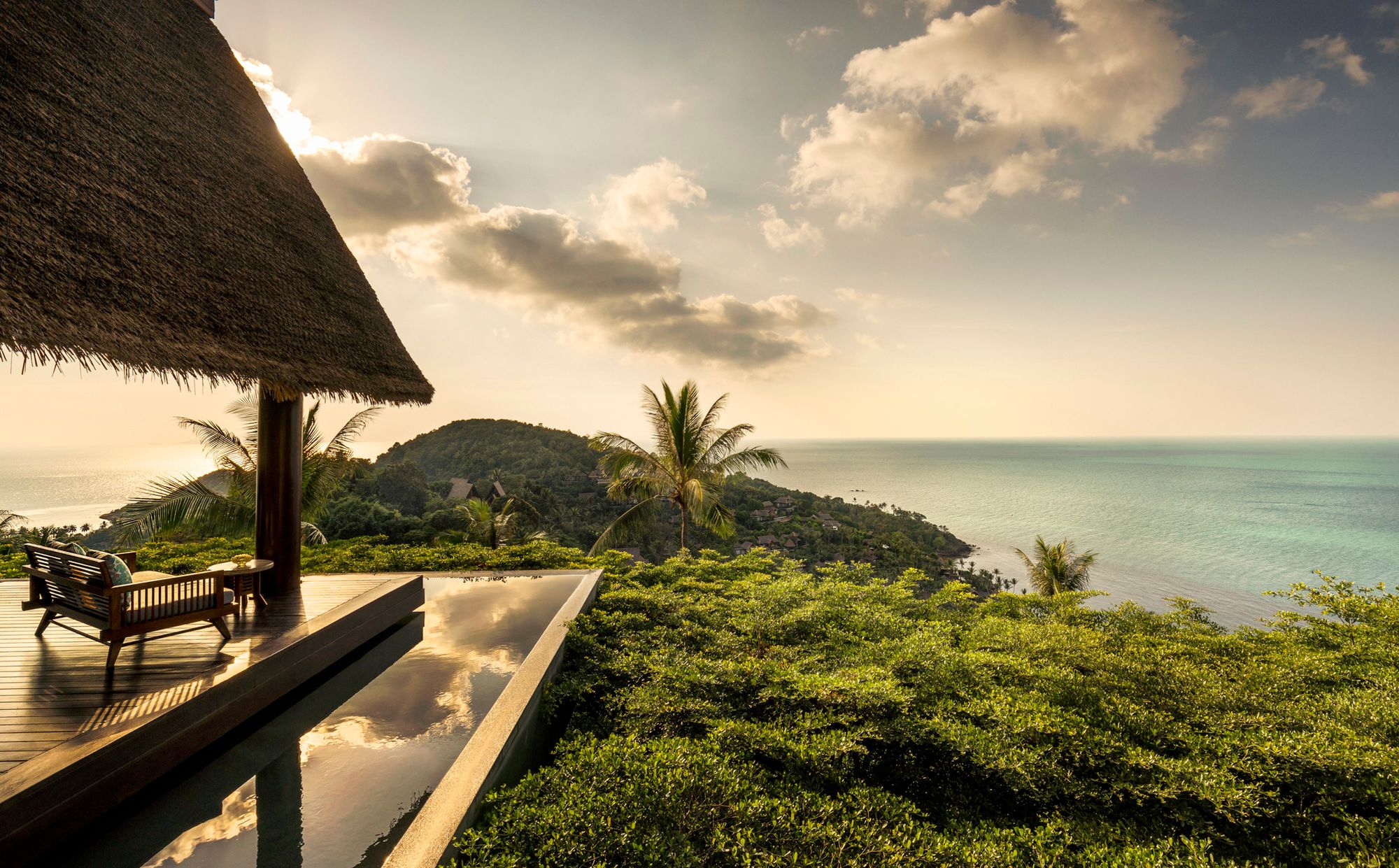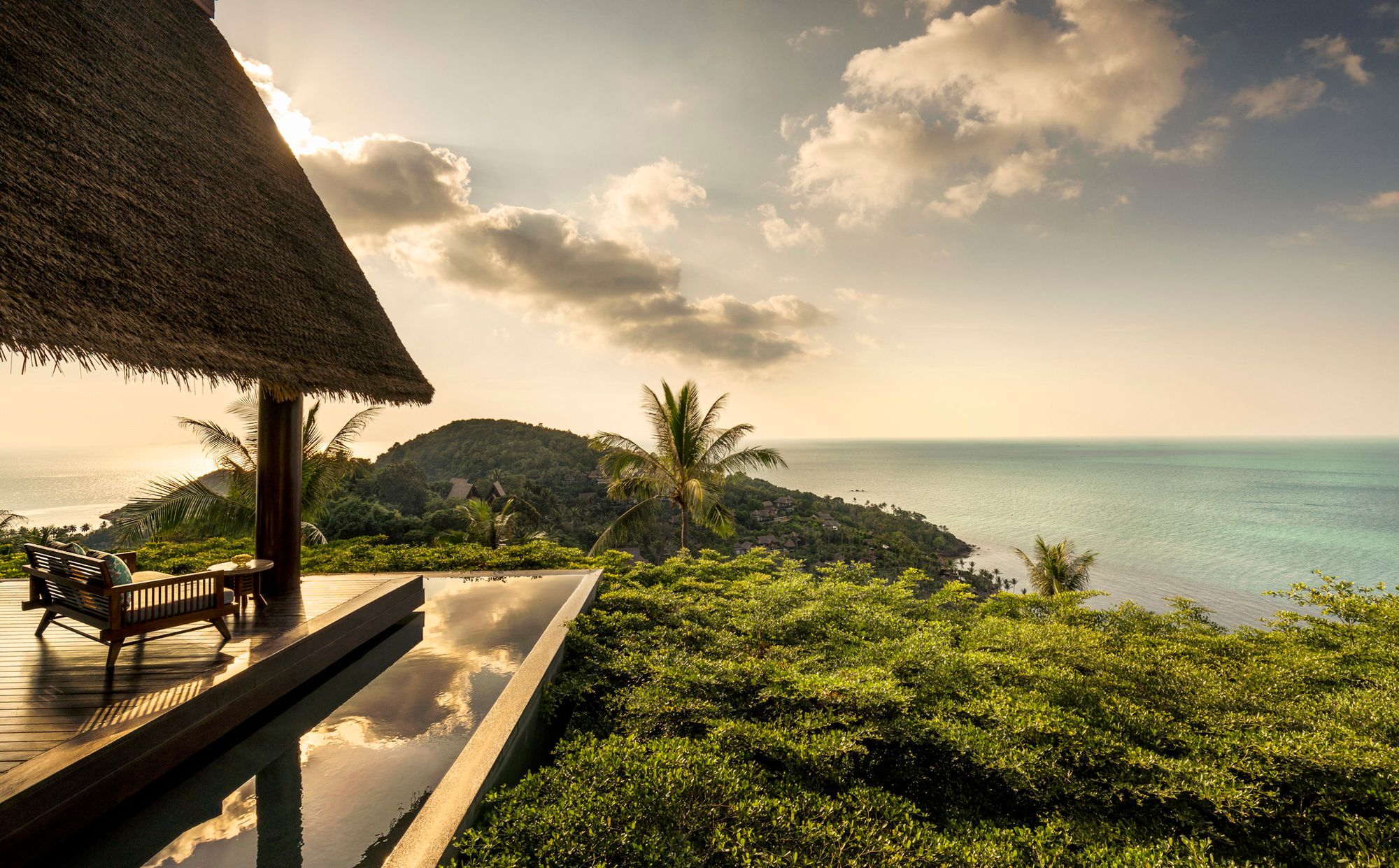
Thailand is a country of diverse landscapes and dizzying contrasts – and it's expecting a tourist boom in 2025 following the release of season three of HBO's The White Lotus, which is set around the country. The show, which is part social satire, part murder mystery, features filming locations in Bangkok, as well as on the islands of Phuket and Koh Samui.
The primary filming location for The White Lotus was the Four Seasons Resort Koh Samui, with opulent villas secluded by the jungle, and a private beach looking out towards Koh Phangan. Other locations featured include the Anantara Mai Khao Phuket Villas, found between Phuket's longest beach and the Sirinath National Park, the Café Del Mar (advertised as "a daytime oasis among the hectic Phuket party scene") in Phuket, and the Mandarin Oriental, a luxury hotel in Bangkok on the banks of the Chao Phraya River, which winds through the city.
Historically, settings featured in the show have seen a big bump in tourism after the show has aired – despite the fact that it's actually a rather scathing critique of luxury tourism. Here, we're going to be looking at where you can go beyond those White Lotus filming locations to see the real Thailand, get away from the crowds and extend your Thai adventure out to the wild places of the country.
In Koh Samui, you can also discover a mountainous, forested interior that’s perfect for hiking. In Phuket, an unparalleled street food scene...
Most people begin their journey in the capital of Bangkok, an urban sprawl of skyscrapers, golden-topped temples and bustling street markets in Thailand's central plain. If you head to the country’s north you’ll discover rugged mountains and forested foothills inhabited by indigenous hill tribes.
Most travellers, however, are drawn to southern Thailand; a long, narrow isthmus with its east coast facing the Gulf of Thailand and its west bordering the Andaman Sea. Islands are scattered off both coasts – there are 1,430 in total – and the largest is Phuket, known for its colourful Old Town. Then there’s Koh Samui, an island renowned for its upscale resorts and idyllic beaches.
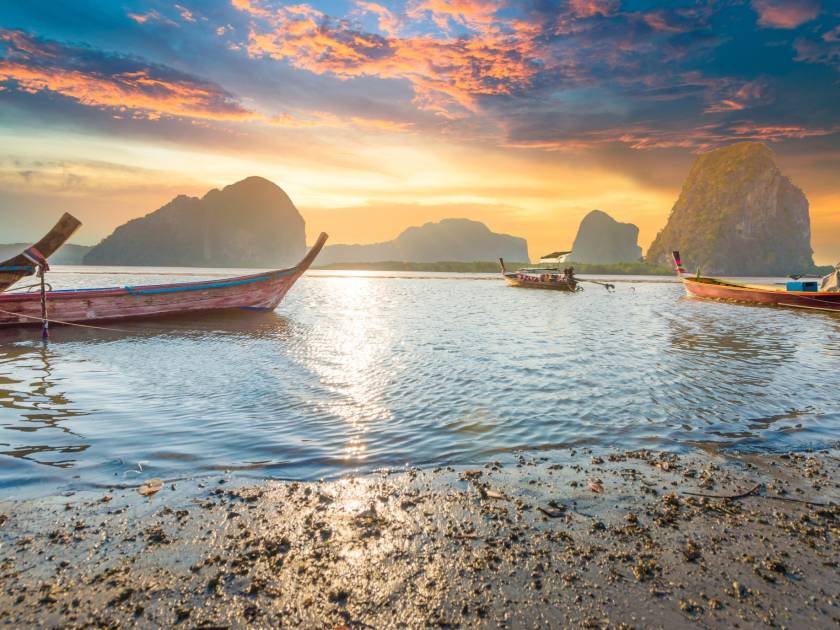
Bangkok, Phuket and Koh Samui are drawing a lot of attention right now as White Lotus gets people looking at flights, but each has more than luxury hotels to offer. In Koh Samui, you can also discover a mountainous, forested interior that’s perfect for hiking. In Phuket, an unparalleled street food scene. Bangkok might be a thriving megacity, but there are verdant nature reserves to visit both within and beyond city limits.
Below, we’ve picked out our favourite alternative escapes near these White Lotus filming locations. They range from the former capital of Ayutthaya, which is now an atmospheric ruin, to the humid rainforest of Khao Sok National Park.
Bangkok
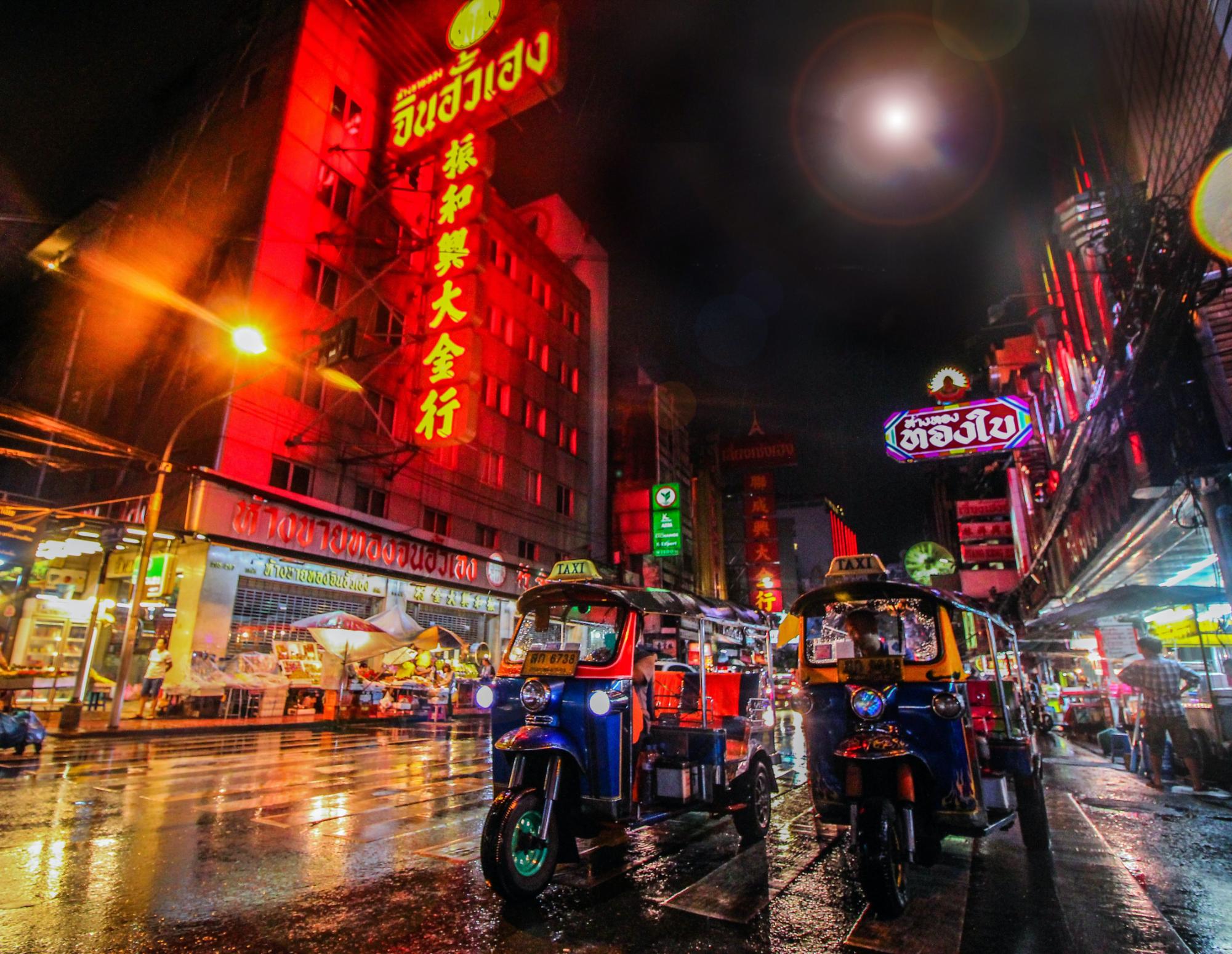
Bangkok is a sensory overload. Motorbikes weave through lanes of traffic, and crowds throng round night market stalls. The city is an intoxicating blend of old and new, where traditional long-tail boats still glide along the Chao Phraya River, yet skytrains zip above neon-lit skyscrapers. The city is a cultural melting pot, where you’ll find Christian cathedrals and Hindu temples alongside the gleaming golden spires of Buddhist wats.
The famous markets of Bangkok pop up on various occasions in The White Lotus, and the city has them in abundance, including the labyrinthine Chatuchak Weekend Market, which boasts 15,000 stalls. Beyond shopping, there's plenty to see and do in Bangkok. Among its treasures is Siriraj Medical Museum, a macabre yet fascinating collection of forensic specimens and medical oddities housed in a working hospital. Head to Yaowarat Road, in the heart of Bangkok’s Chinatown, and you'll find a popular destination for street food.

If the bustle of the city gets too much for you, visit Bang Krachao, an artificial island in the Chao Phraya River known as the “Green Lung of Bangkok”. You can hire a bicycle to explore the island, pedalling down boardwalks through the forests of Sri Nakhon Khuean Khan Park, past paddy fields and homestays. There’s a local market you can browse, alongside restaurants serving dishes made from homegrown produce.
Once you’ve spent a few days exploring the capital, there are plenty of other nearby destinations to check out.
Explore the Ruins of Ayutthaya
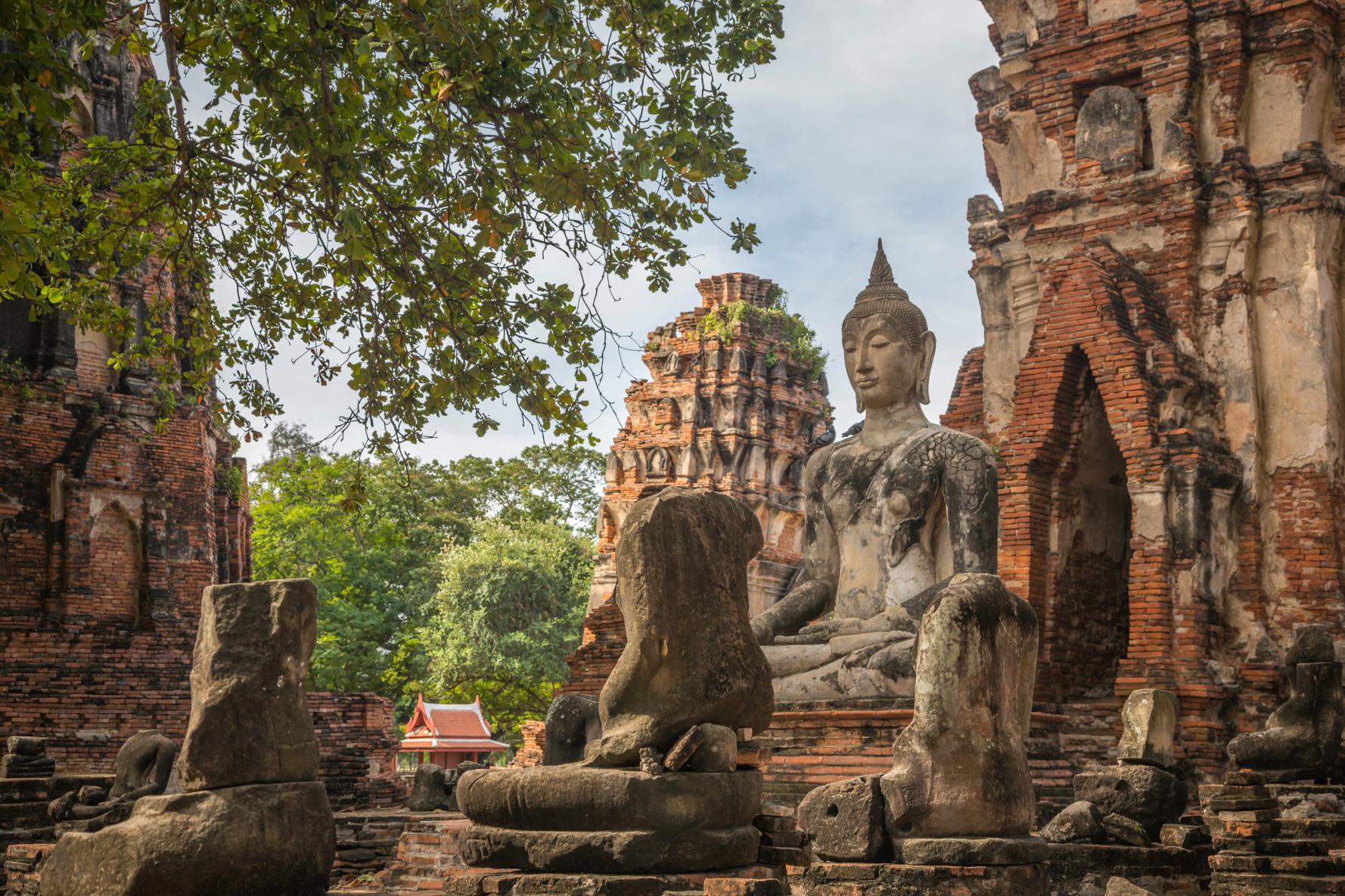
- Distance from Bangkok: 50 miles (80km)
- Best for: Atmospheric ruins
Ayutthaya was founded in 1350 as the capital city of the Siamese Kingdom, around 50 miles (80km) from Bangkok. It was built on an island between three rivers, but despite this defensive location was attacked by the Burmese in 1767.
Visitors today can wander the historic ruins of Ayutthaya, now a UNESCO World Heritage Site. You’ll wander through the ancient royal palace and an array of different temples, including Wat Phra Si Sanphet, where large prangs (or towers) give an idea of the city’s architectural splendour, and Wat Mahathat, famous for the Buddha’s head statue surrounded by tree roots.
At nine square miles (15 sq. km), Ayutthaya is a big site to explore on foot. Navigate it by hiring a tuk tuk for the day, or even a bicycle if you’d prefer to be active. Many travellers visit Ayutthaya as part of a guided tour from Bangkok and are driven to various attractions – if you’d like to do so, we’d recommend choosing one which takes you there by boat along the Chao Phraya River.
How to get there (from Bangkok): Travel from Hua Lamphong Station in Bangkok - trains take between one to two hours. It takes around 90 minutes to reach Ayutthaya by road by coach or taxi.
Ride the Death Railway
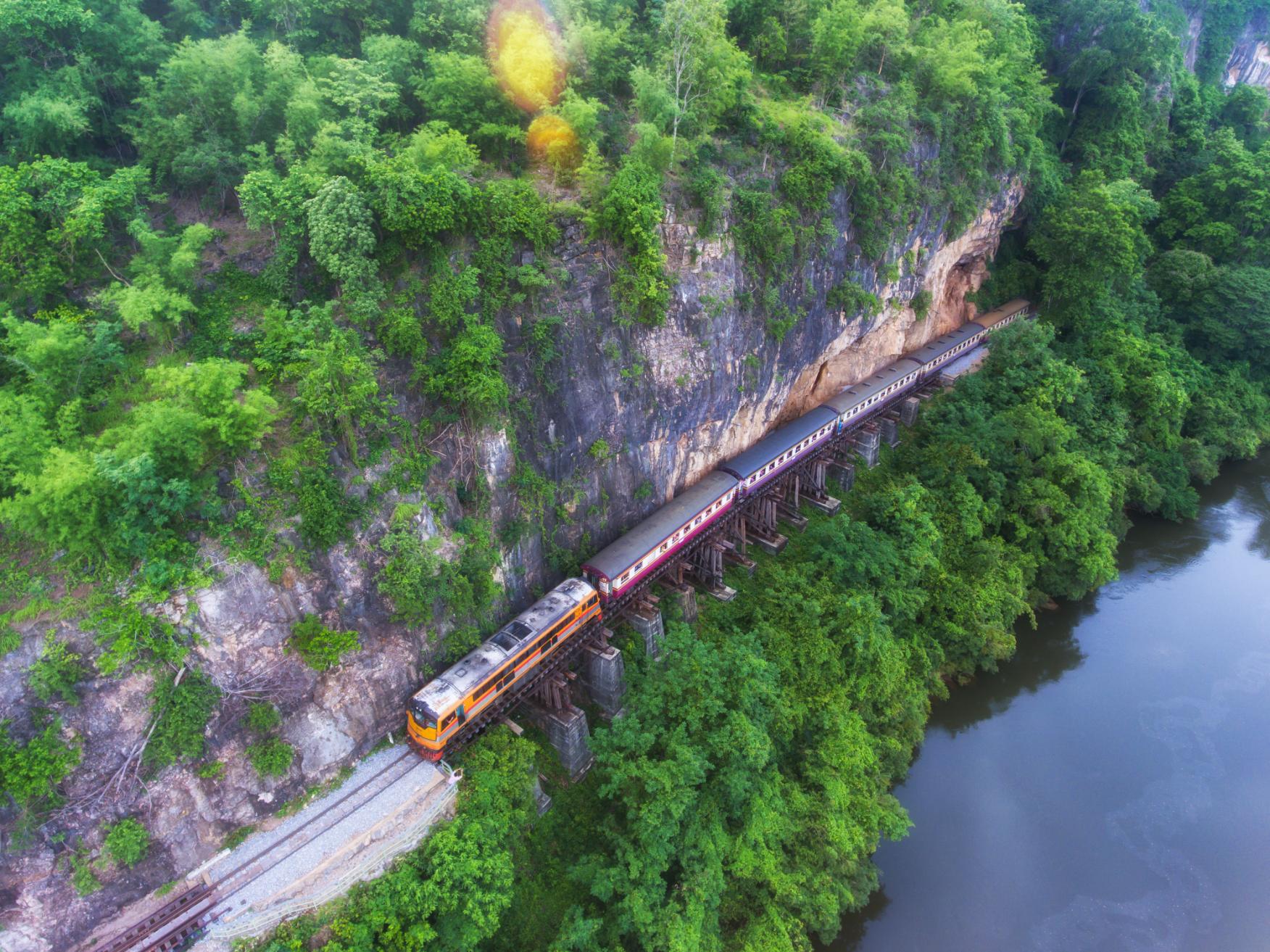
- Distance from Bangkok: 80 miles (131km)
- Best for: Evocative railway journeys
Between 1942 and 1943 the Japanese brought Allied prisoners of war and Asian labourers to Thailand to build a railway connecting Thailand to Burma. The brutal conditions of the workers, and the inhospitable terrain, caused the deaths of 90,000 labourers and around 16,000 POWs - hence the moniker, ‘Death Railway’. Much of the railway was dismantled by the British after World War II, and just 80 miles (131km) is still in use.
The scenic train ride now takes you from Bangkok to Kachanaburi, over the famous wooden River Kwai Bridge, and ascends into forested hills known as the “Little Amazon”, before terminating at the station of Nam Tok. The total journey time is around five hours, although many people disembark at Kanchanaburi, where you can visit the War Cemetery and two fascinating museums.
Kanchanaburi is also a good base for hiking. Visit nearby Erawan National Park, renowned for its seven tier waterfall, or hike the Hellfire Pass Memorial Trail, which leads through a (now disused) section of the railway which was carved out of solid rock by hand. You’ll follow in the footsteps of the forced labourers, passing rusted railway remnants and caves once used as shelters.
How to get there (from Bangkok): Catch the twice daily train from Bangkok’s Thonburi Station to Kachanburi (two hours 30 minutes). From Kachanburi, it’s another two hours and 30 minutes before the Death Railway terminates at Nam Tok.
Hike in Khao Yai National Park
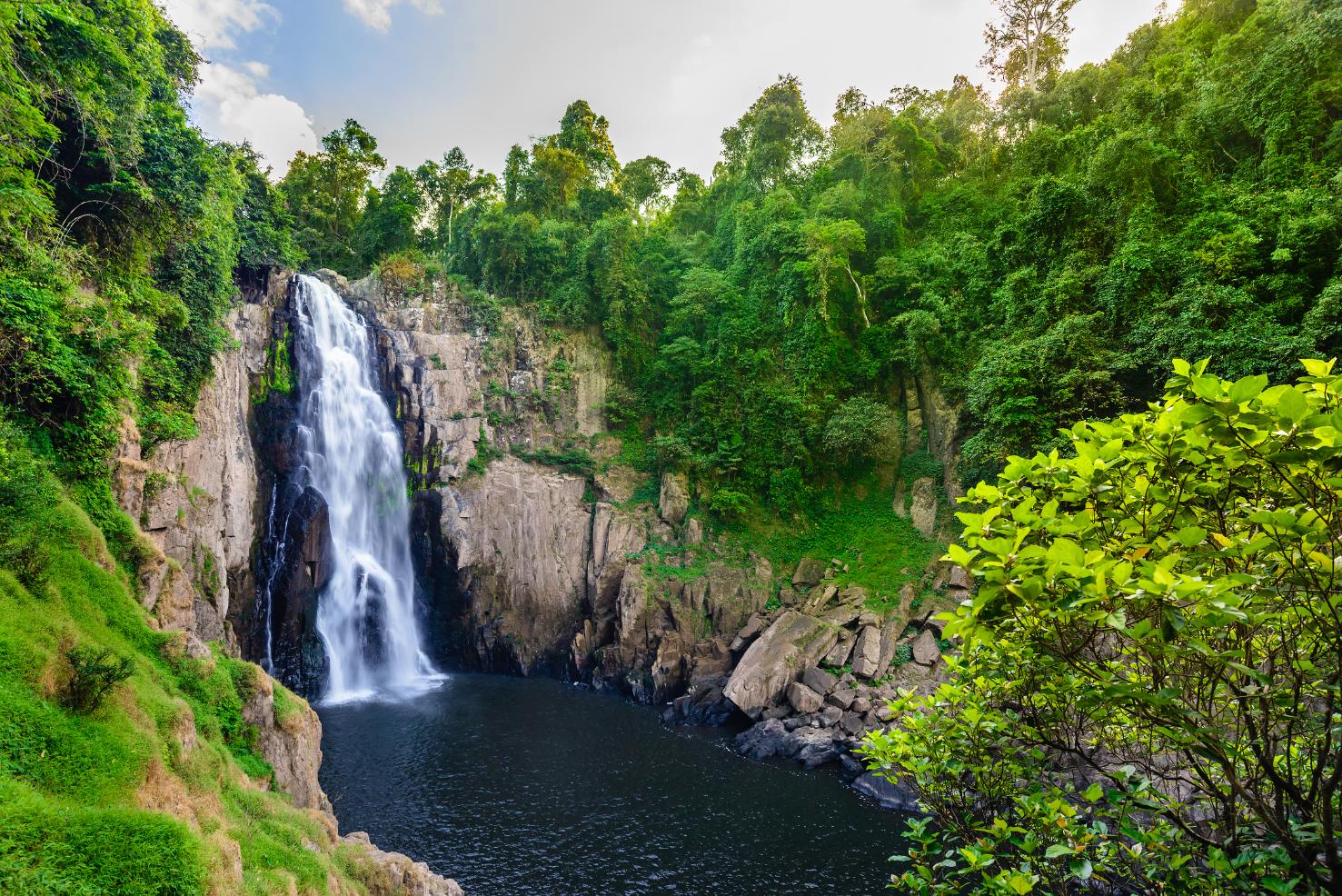
- Distance from Bangkok: 105 miles (170km)
- Best for: Wildlife hikes
Thailand’s first national park is located just a few hours’ drive from Bangkok. It’s a vast area of savannah, rainforest and forested mountains including 13,51-metre-high (4,432ft) Khao Rom. The park is home to elephants, tigers, gibbons and over 300 species of bird. Wildlife watching is a popular pastime here, with opportunities for birdwatching and nocturnal safaris.
There are seven marked hiking trails within the park. The most challenging of these is the four-mile (8km) trek from the visitor centre to Haew Suwat Waterfall, which plunges 25 metres (82ft) down volcanic rock. The trail winds backwards and forwards through mature rainforest and bamboo groves; it’s a foraging route for elephants, who you may see as you hike. For this reason, taking a guide is mandatory.
Given it takes a few hours by road to reach the park from Bangkok, it’s best to stay overnight. There are two campsites and several lodges within Khao Yai National Park, as well as several restaurants.
How to get there (from Bangkok): You can take a train, coach or minivan from Bangkok to Pak Chong (2.5 to three hours), the closest town to the park. From here, take a taxi or songthaew to the park, which takes a further 30 minutes. Alternatively, you can drive from Bangkok directly to the park.
Phuket
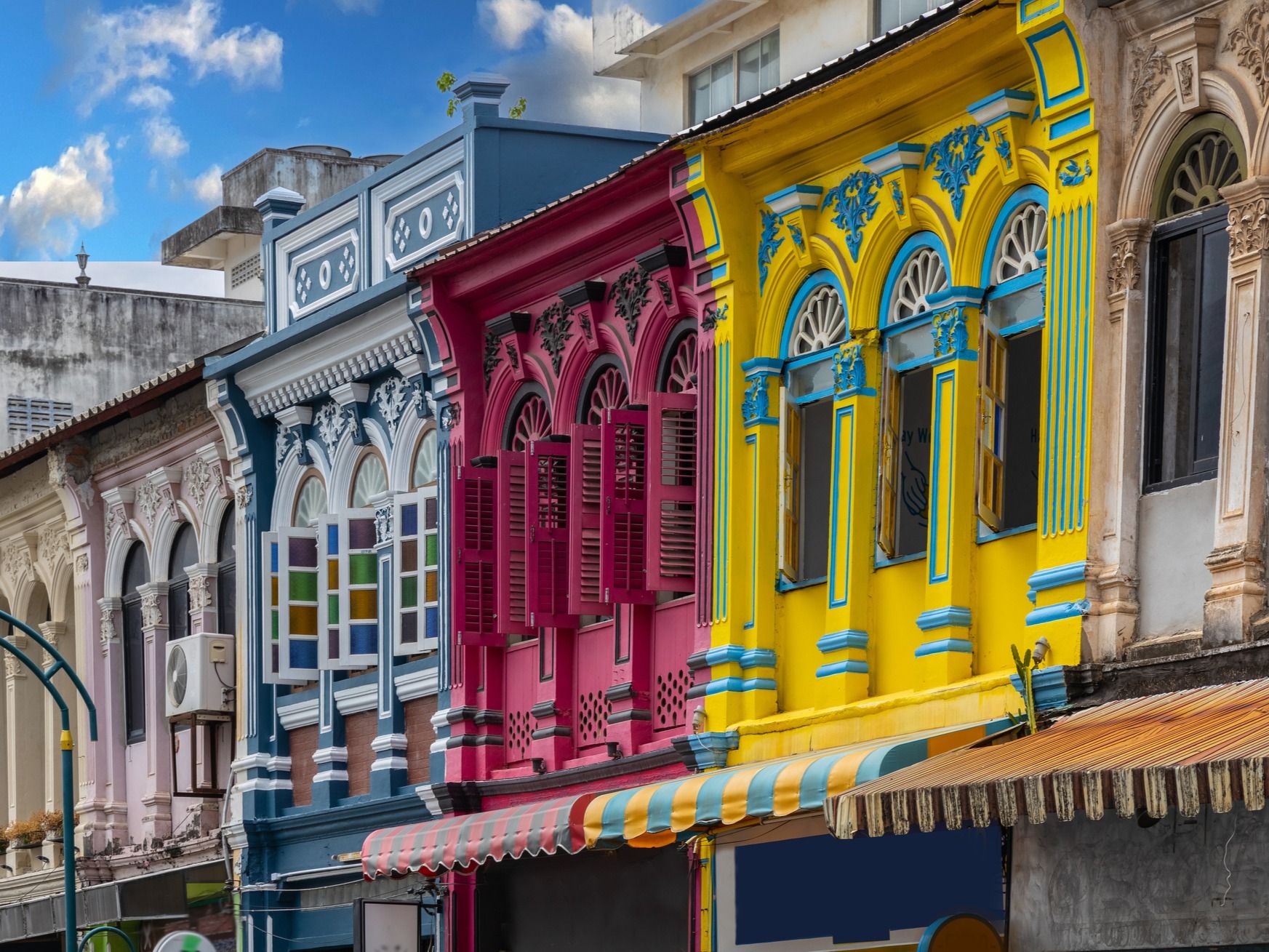
Phuket is the largest island in Thailand, and one of the busiest, used by travellers as a jumping off point for island-hopping trips. It’s worth taking a bit of time out to explore. To live life a la White Lotus, eat the elevated southern Thai cuisine at Ta Khai, or if the desire takes you, watch a Muay Thai match at Boxing Bangla Stadium. End the day with a sundowner at Cafe del Mar, a luxurious beach club.
Phuket Old Town is known for its colourful Sino-Portuguese architecture, and lively night markets. The town has a unique food culture thanks to migration from China, Malaysia and further afield. Try stir-fried Hokkien noodles from one of the old Chinese shophouses, or head to one of Phuket’s Muslim restaurants for biryani and kaeng phae (goat curry).
There’s plenty to explore in Phuket, from street art murals to Wat Chalong, a sprawling 19th century Buddhist temple complex. Head out of town to the Big Buddha statue, perched on a hilltop with panoramic views over the island. If you’re looking for more of a nature fix, you could visit Khao Phra Thaeo National Park, in the north of the island, to hike trails through the rainforest or swim in natural pools. And of course, there are plenty of nearby islands to visit too.
Sea Kayak in Phang Nga Bay
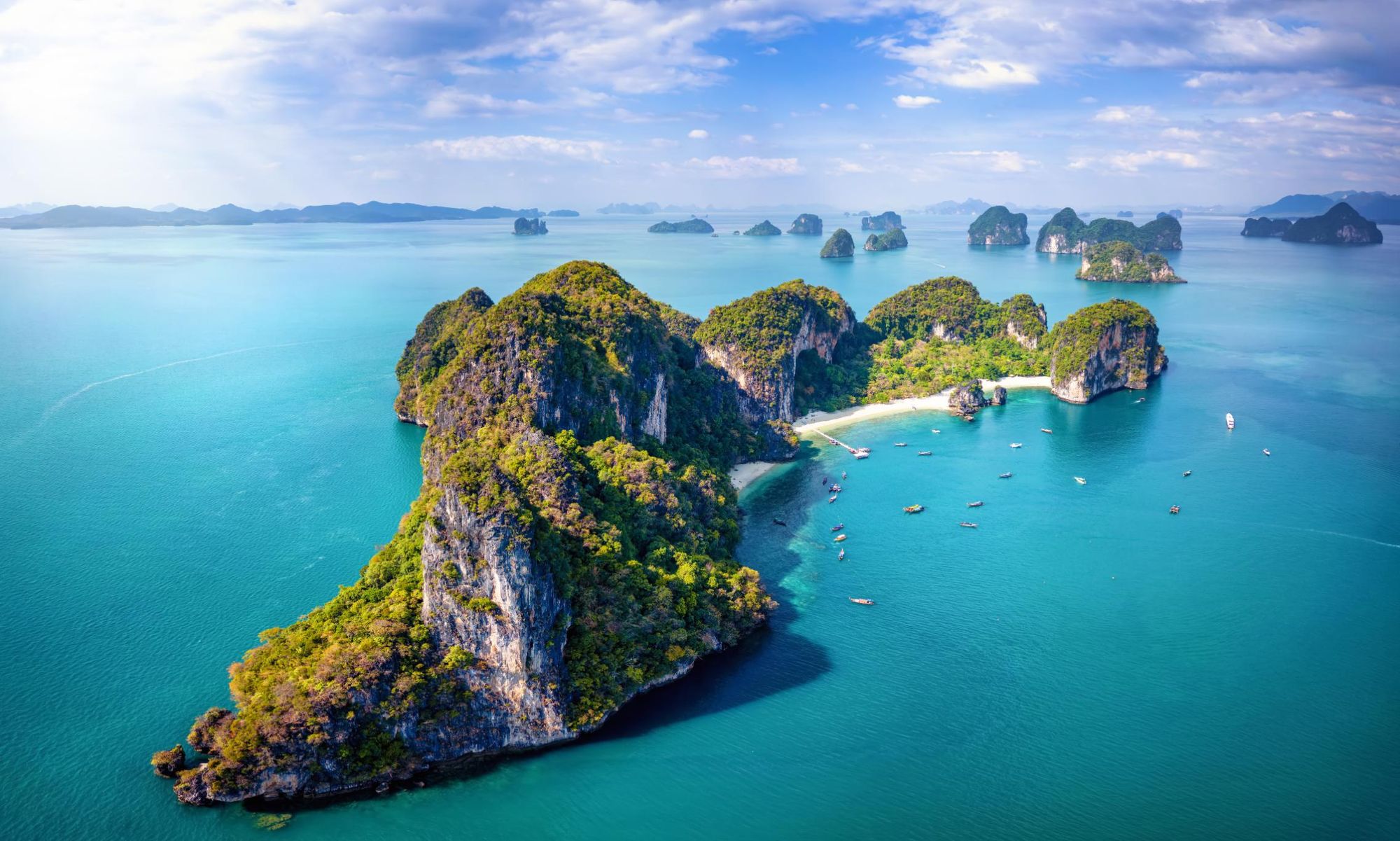
- Distance from Phuket: 27.9 miles (45km)
- Best for: Sea kayaking expeditions
A broad sweeping bay to the north of Phuket on the Thai mainland, Phang Nga is known for its surreal landscape of limestone karst islands, which rise from its emerald waters. One of the most famous is James Bond Island, made famous by Roger Moore's 1974 outing The Man with the Golden Gun.
Paddle past karst islands, sheer limestone cliffs and through dazzling sea caves.
Most tours of Phang Nga Bay begin from Ao Po Pier. There are plenty of different options, ranging from private yachts to larger boats. Most include sightseeing stops and a lunch buffet. However, we’d recommend eschewing these boats – which can get crowded – for a more off-the-beaten track sea kayaking trip.
You’ll be taken out to sea in a traditional longtail boat, stopping in a variety of different locations to launch your kayaks. What follows is a paddle past karst islands, sheer limestone cliffs and through dazzling sea caves.
How to get there (from Phuket): Head to Ao Po Pier, on the northwest tip of Phuket. From here you can do a tour of Phang Nga by speedboat or longtail boat. Alternatively, drive to Phang Nga Bay by road and catch a boat from Ngop-Ko Tapu Pier (two hours).
Kick Back on Koh Yao Yai
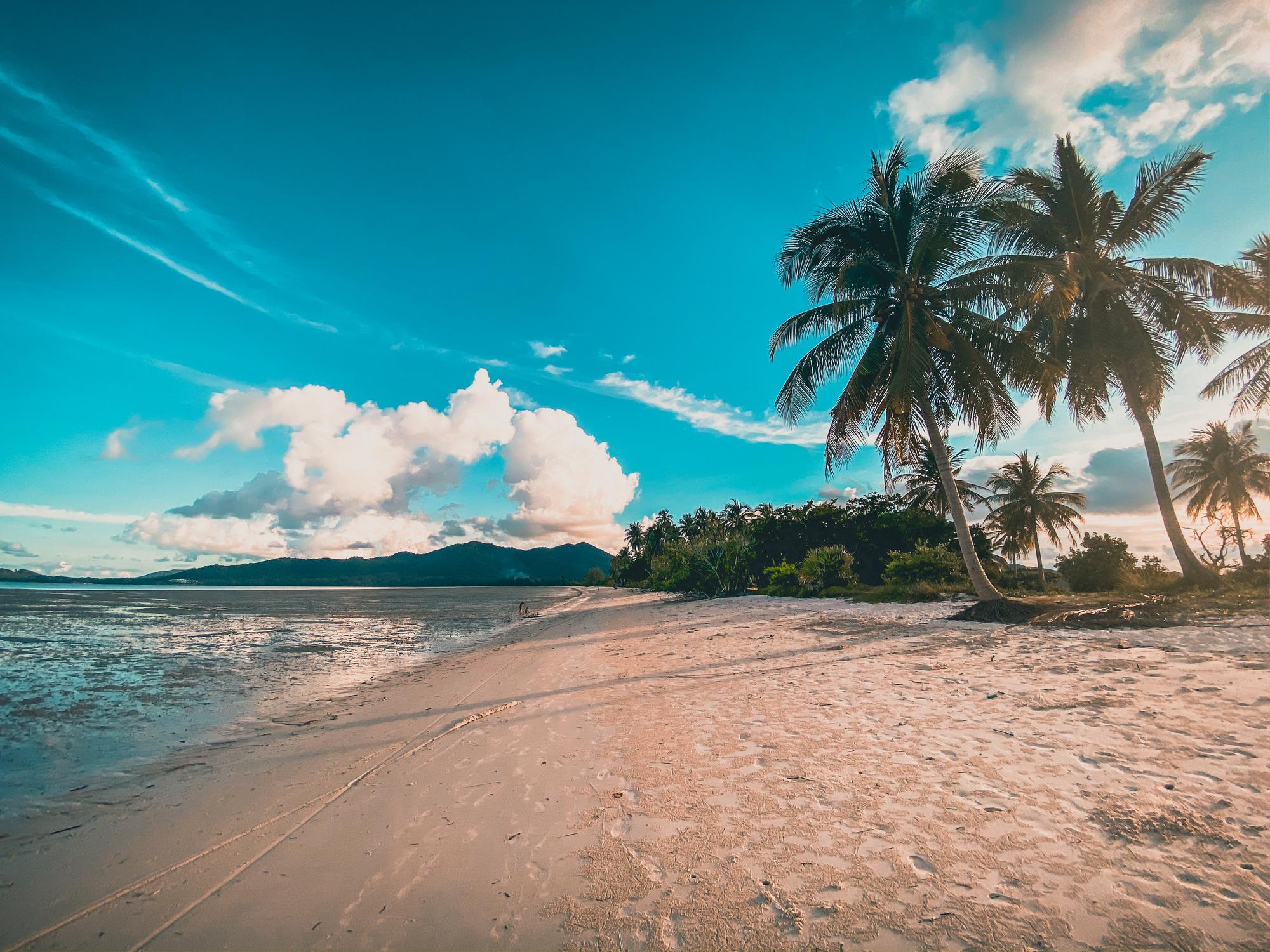
- Distance from Phuket: 14.2 miles (23.4km)
- Best for: A tranquil island escape
Koh Yao Yai remains blissfully under the radar, despite its proximity to Phuket. The island’s Muslim-majority community endeavours to ensure their home doesn’t become another party island. The traditional way of life has been preserved here, with working rubber plantations, wooden stilt houses and local cafes and restaurants serving homegrown vegetables.

The beaches are quiet and unspoilt, despite their beauty. Laem Had Beach has a gleaming white sandbar and is often compared to the Maldives, while Ao Sai is a tucked-away golden sand cove. The islanders also offer guided hikes through Koh Yao Yai’s rubber plantations, and kayaking excursions through the twisting mangroves that circle the shores.
How to get there (from Phuket): Catch the ferry from Bang Rong Pier (it’s a 30 minute journey).
Explore Khao Sok National Park
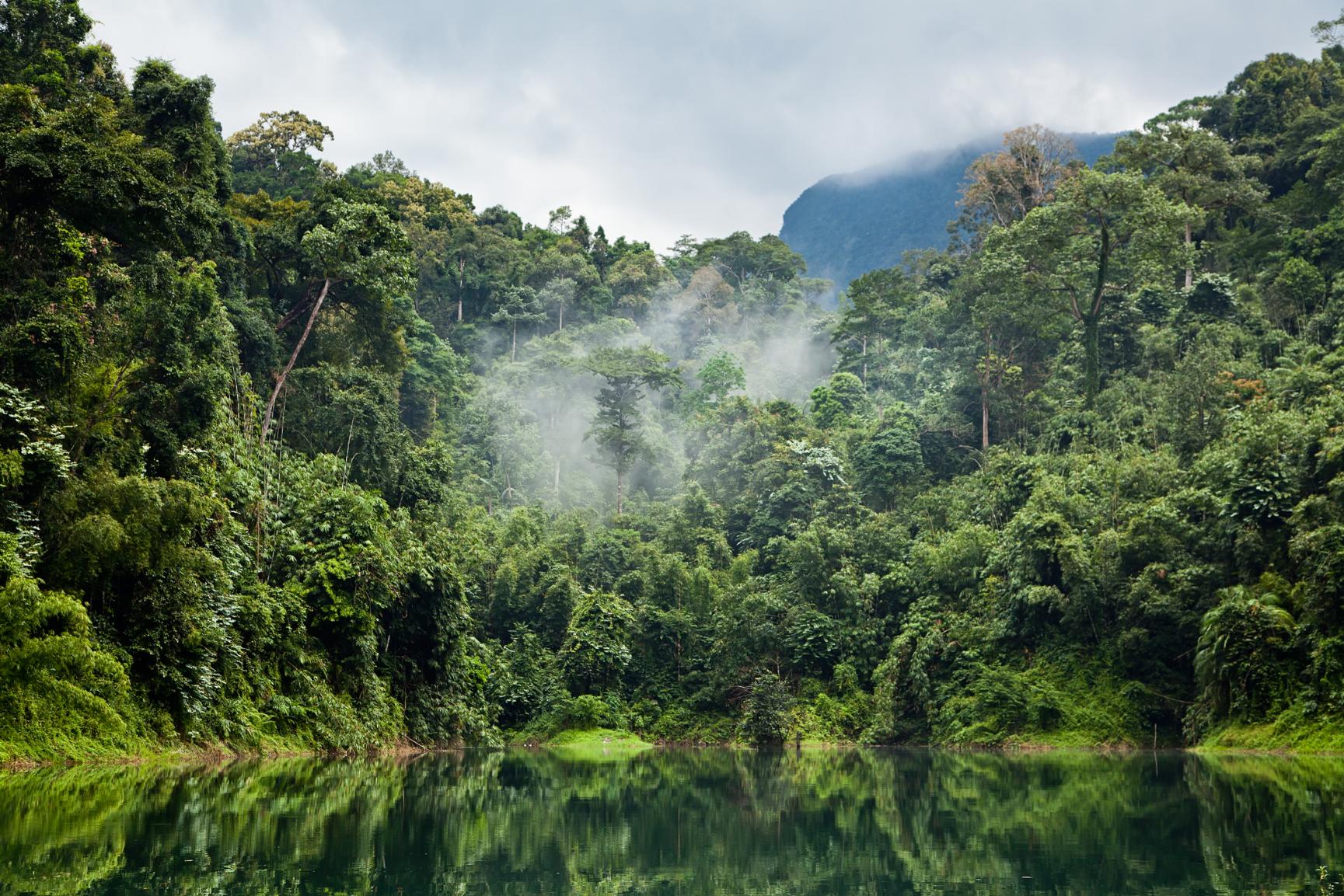
- Distance from Phuket: 110 miles (177km)
- Best for: Rainforest hikes and floating bungalows
Covering around 270 square miles (435.5 sq. km), this national park preserves southern Thailand’s largest remaining swathe of ancient forest, the tree canopy punctuated by jutting limestone mountains. It’s home to Malaysian tapirs, muntjac, Malaysian sun bears and leopard cats among others. Rafflesia flowers, renowned for their huge red blooms and pungent odour, flower between January and March.
Hiking trails run through the park, taking you to scenic waterfalls and to areas where rafflesia bloom. That said, they are well trodden – to get further away from the main routes, we’d recommend a guided hike. This will give you a greater opportunity for wildlife spotting. You can also trek in the park after dark on night safaris, when many of the animals are most active.
One of the highlights of Khao Sok is Cheow Lan Lake, a 71-square-mile lake created in 1987 during the building of the electricity-generating Ratchaprapa Dam. You can spend the night on the lake in tranquil floating bungalows, canoeing and swimming from the jetty outside your room.
Koh Samui
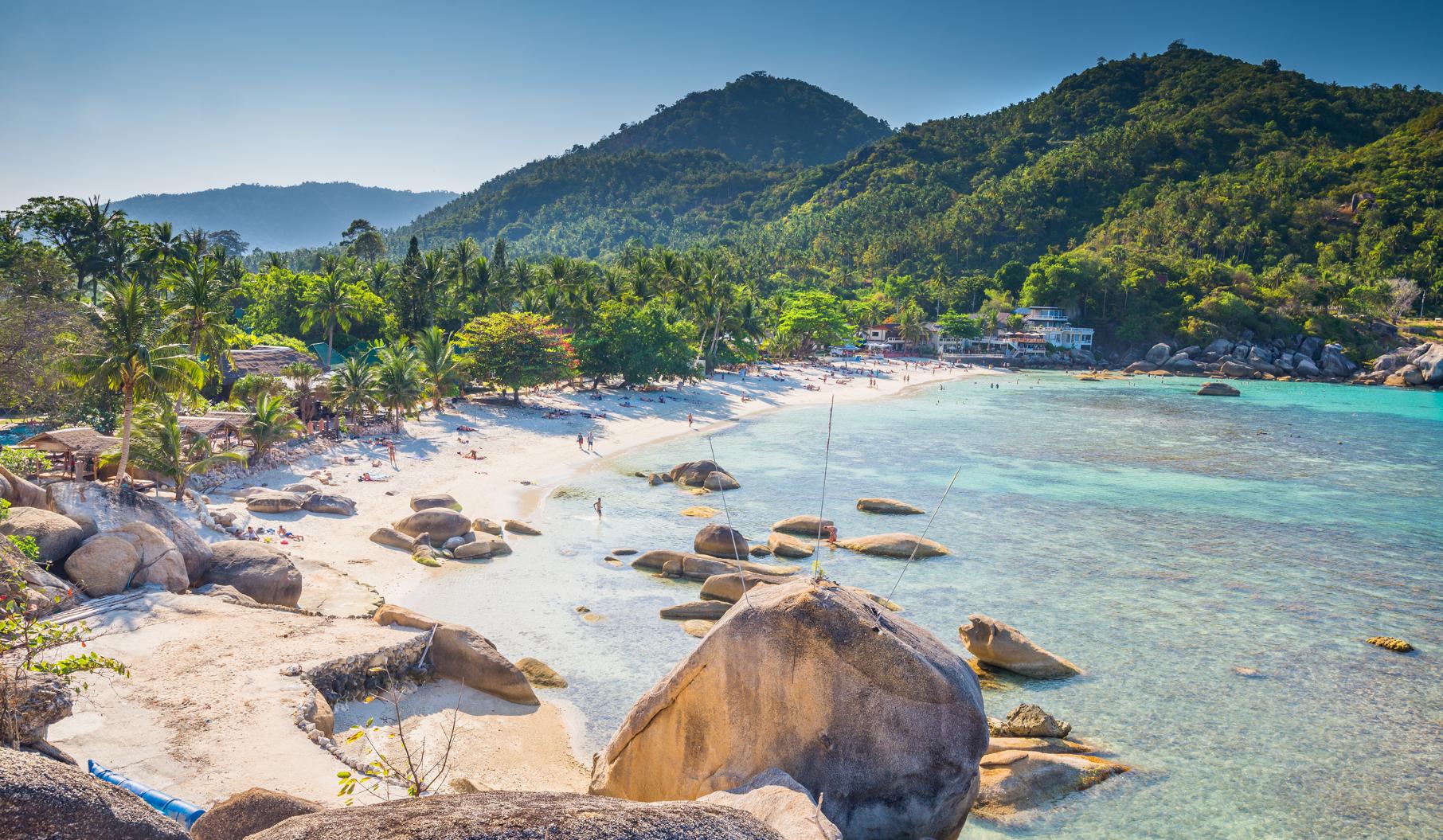
Koh Samui can be found in the Gulf of Thailand, an island in the Chumphon Archipelago. It’s renowned for its tropical beaches and high end hotels, making at an obvious choice for The White Lotus to sneak in for season three.
There’s also a campsite and a few simple bungalows. You’ll have the island to yourself without daytrippers...
Amongst the many beautiful beaches featured in the series in Choeng Mon Beach, a white sand crescent with a secluded feel, which features in the latest series.
To really experience the island’s tranquility, though, head inland. There are hiking trails running through the island’s forested interior, ranging from easy rambles to the Na Muang Waterfalls, twin cascades with natural pools for swimming, or the more challenging Nathon Mountain Ridge trek. There are also some notable Buddhist landmarks, including the serene Tarnim Magic Garden, with hundre0ds of stone Buddha statues perched amid lush jungle.
As with Phuket, it’s also possible to explore the surrounding islands by boat; many of which make for fascinating detour destinations.
Island Hop in Ang Thong Marine Park
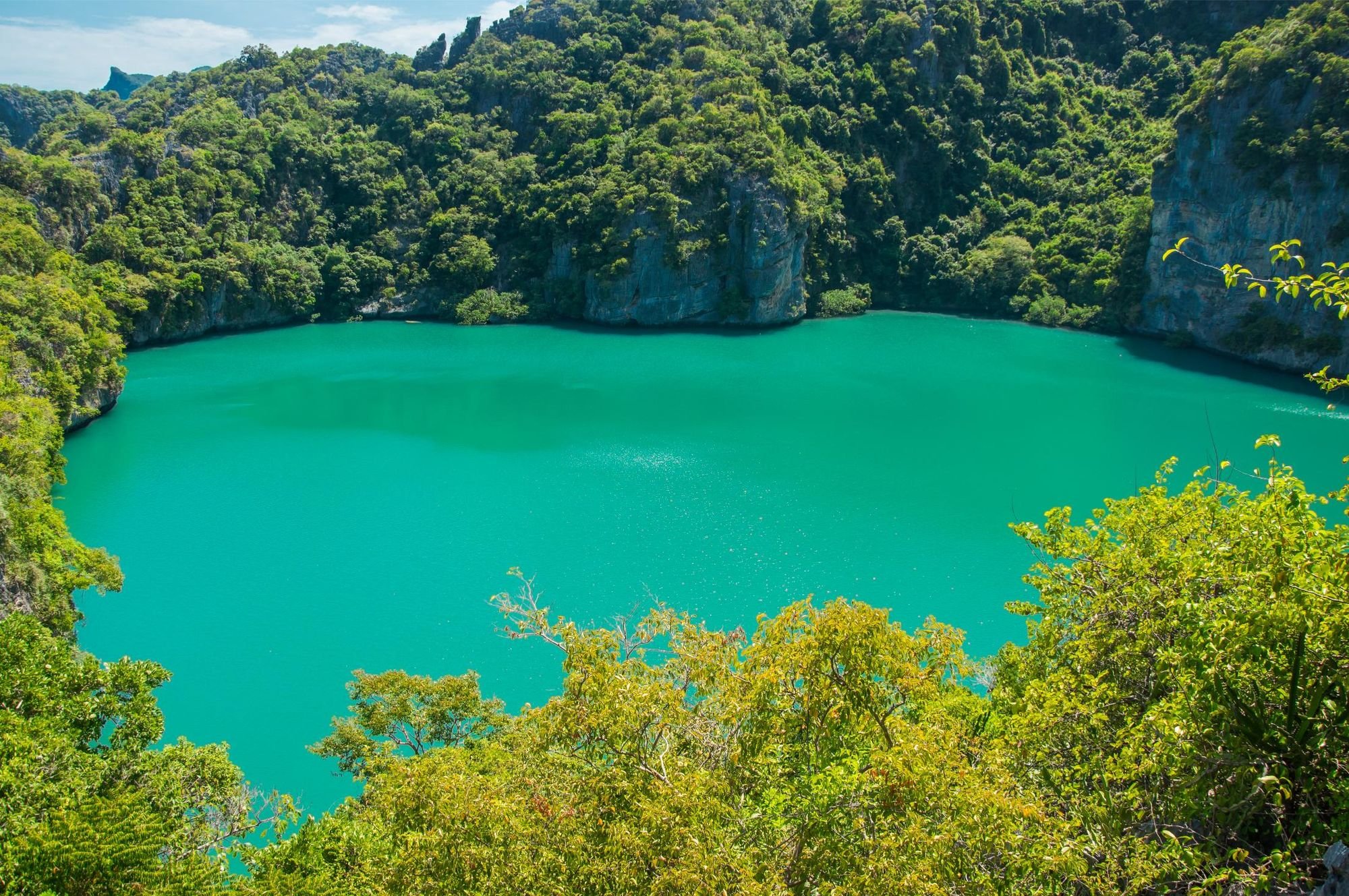
- Distance from Koh Samui: 22.3 miles (46km)
- Best for: Island hopping
Ang Thong National Marine Park is another Another White Lotus filming location; a breathtaking archipelago of 42 limestone islands, carpeted with lush forest and fringed with pristine beaches. There are plenty of boat excursions to the islands from Koh Samui, offering an array of activities from snorkelling to kayaking.
The main island in the archipelago is Koh Wua Talap, where you’ll find the headquarters of the national park, alongside a simple restaurant. There’s also a campsite and a few simple bungalows, which is the only place in the park where you can spend the night. We’d recommend doing so, as you’ll have the island to yourself without daytrippers. Hike up to the Wua Ta Lap Viewpoint for panoramic views over the archipelago.
How to get there (from Koh Samui): The only way is by water. The journey by speedboat takes around an hour.
Snorkel in Koh Tao
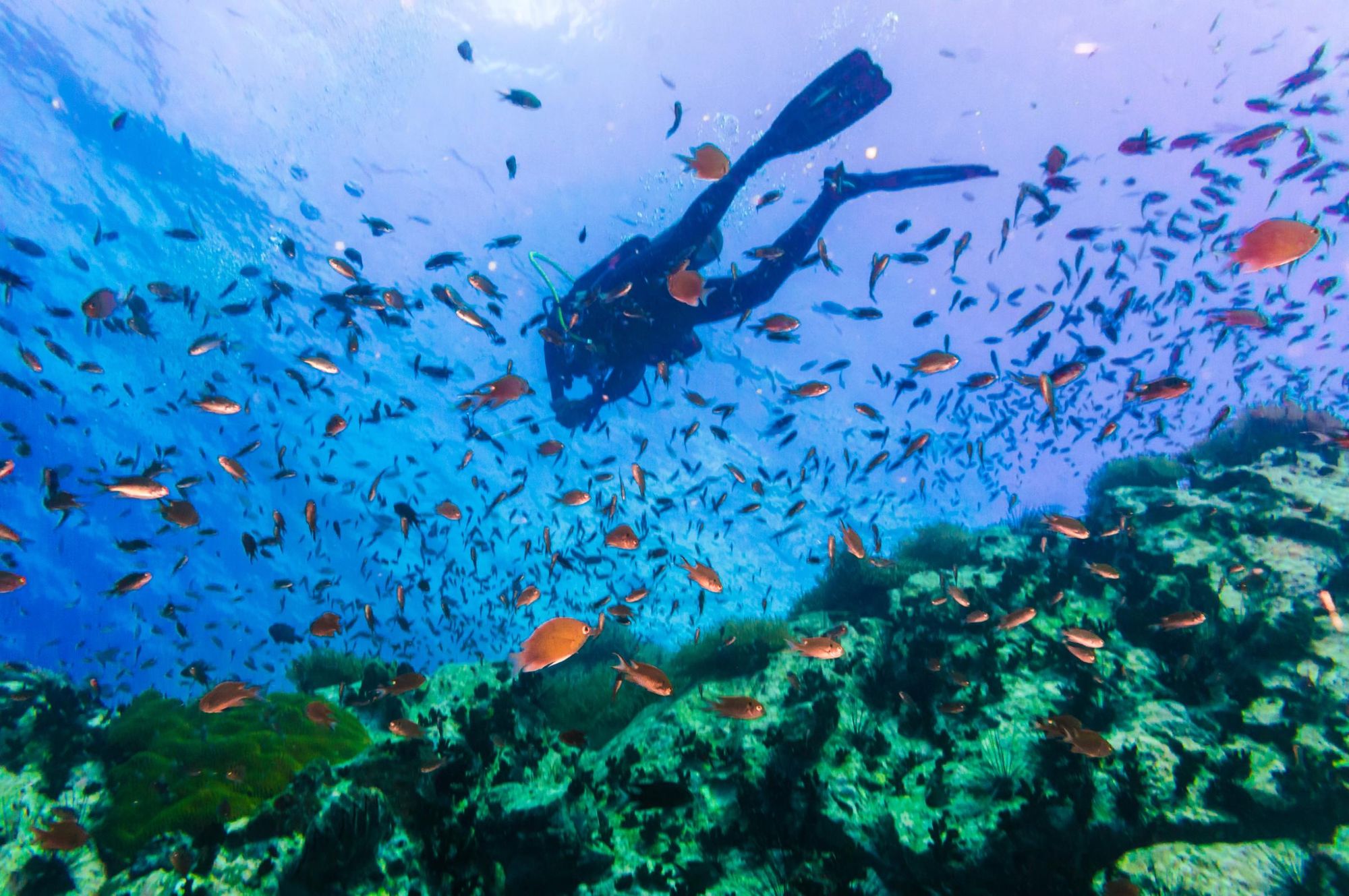
- Distance from Koh Samui: 42 miles (67.6km)
- Best for: Snorkelling and scuba diving
Koh Tao is an island in the Chumphon Archipelago; a quieter alternative to Koh Samui and neighbouring Koh Phangan. It’s renowned as a diving location, thanks to its clear waters and a number of interesting dive sites. These include Chumphon Pinnacle, a deep dive site known for whale shark sightings, and Japanese Gardens, where colourful fish swim among coral formations.
If diving isn’t your thing, you explore the island on foot, following hiking trails to quiet beaches or to John Suwan View Point, located on a rocky promontory inland. Hire kayaks and paddle to nearby Koh Nang Yuan, a tiny island connected to Koh Tao by a sandbar. Or simply kick back and enjoy the peace.
How to get there (from Koh Samui): Catch a ferry or speedboat from Koh Samui’s Mae Nam Pier to Koh Tao’s Mae Haad Pier. The fastest boats take around 90 minutes.
Trek in Khao Luang National Park
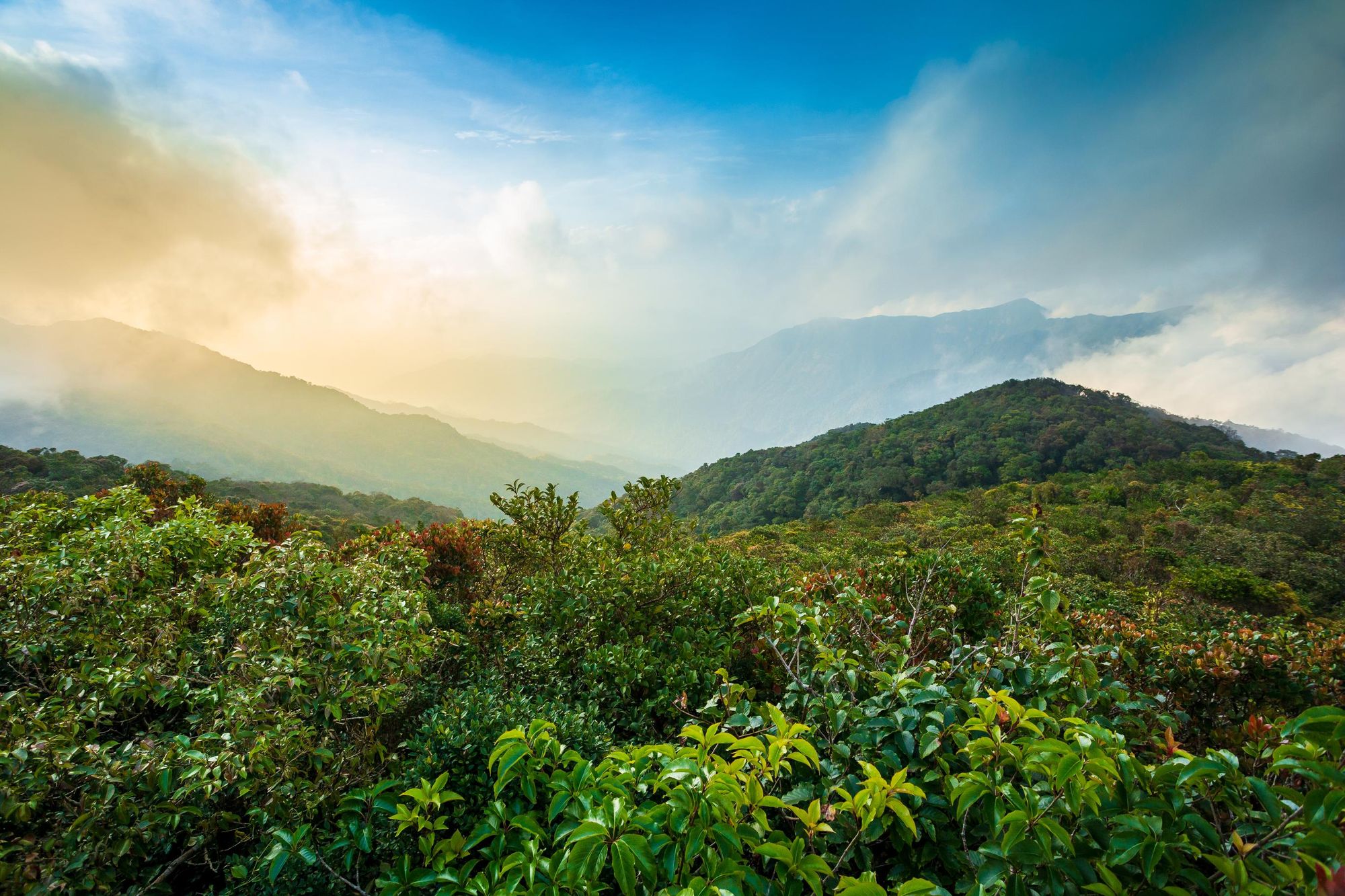
- Distance from Koh Samui: 72.7 miles (117km)
- Best for: Jungle trekking
Back on the Thai mainland is Khao Luang National Park, a soaring mountain range carpeted with dense evergreen forest. Over 300 animal species call it home, including panthers, clouded leopards and dusky speckled langurs.
The park gets its name from Khao Luang Mountain, the highest peak in southern Thailand at 1,835m (6,020ft), which can be climbed as part of a challenging multi-day trek. Another of the park’s highlights is Karom Waterfall, a multi-tiered cascade with clear pools perfect for swimming. There is a camping area near the park’s headquarters, for those interested in staying overnight.
How to get there (from Koh Samui): Catch the ferry to the city of Nakhon Si Thammarat (four hours). From here, you can catch a songthaew or taxi to Khao Luang. The 25 mile (40km) journey takes around 40 minutes.
Inspired? Check out our Kayak and Hike Wild Thailand Adventure, which visits Bangkok, Phuket and beyond.


